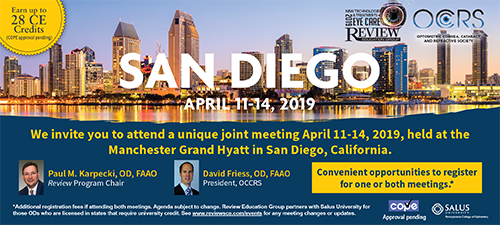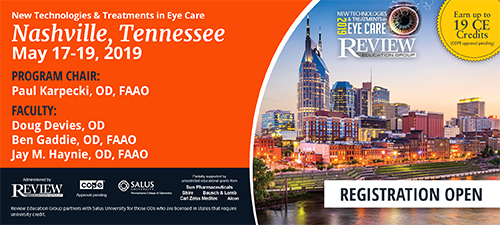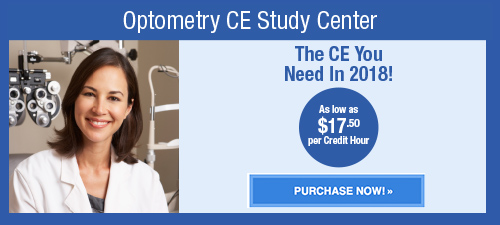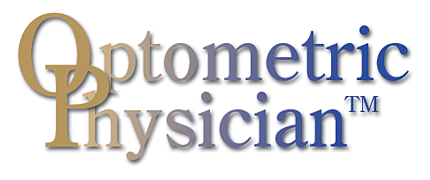
A
weekly e-journal by Art Epstein, OD, FAAO
Off the Cuff: March Madness
For those concerned I'll be talking about basketball, don't worry, this is not about that. March madness was an incredible Vision Expo East panel focused on technology and advanced imaging. It was masterfully put together by Mark Dunbar, co-chair of Expo's Education Planning Board, and included me, Steve Ferrucci, Jerry Sherman, Marc Bloomenstein, Jay Haynie, Danica Marrelli, Justin Bazan and Jeff Gerson—in no particular order. It ran like its basketball namesake, with the audience voting for the winner of each bracket who then went on to the next round.
|
|||||
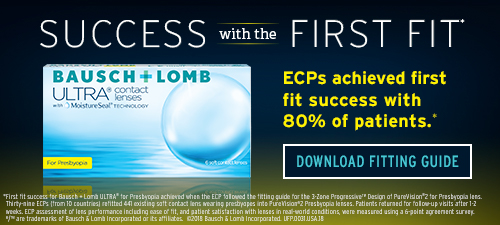 |
||
| Eye Care Professionals' Perceptions of the Benefits of Daily Disposable Silicone Hydrogel Contact Lenses | ||||
A survey was conducted with 300 eye care professionals' (ECPs) in the United States, United Kingdom and Japan during November 2017 to gain a better understanding of ECPs perceptions regarding the benefits of silicone hydrogel (SiH) daily disposable contact lenses (DDCL), particularly with respect to health, comfort and patient satisfaction. The survey comprised 34 statements relating to SiH DDCLs, to which the ECPs provided their level of agreement using a six-point Likert scale. A minimum of 70% agreement was set to define majority agreement. Categories of statements included Health, Comfort, Patient Experience and Standard of Care.
ECPs rated the highest levels of agreement to perceptions within the Patient Experiences and Health categories. The six statements receiving the highest ratings were "Silicone hydrogel 1 day lenses satisfy today's patients' demanding lifestyles" (93% agreement); "Silicone hydrogel 1 day lenses are the best choice to safeguard my patients' eye health related to contact lens wear" (92%); "Silicone hydrogel 1 day lenses provide the best benefits to my patients" (92%); "Silicone hydrogel 1 day lenses provide better long-term eye health for my patients than hydrogel 1 day lenses" (91%); "Silicone hydrogel is the healthiest lens material for my daily disposable patients" (90%); and "Silicone hydrogel 1 day lenses provide a better wearing experience for my patients than hydrogel 1 day lenses" (90%). Researchers wrote that ECPs perceived that SiH DDCLs offered long-term eye health and comfort for the patient, and although the ECPs surveyed would not necessarily prescribe SiH DDCLs to all their patients, they would prescribe them to most of their patients. The results supported the premise that, while ECPs considered SiH 1 day contact lenses as the current "standard of care," the principal barrier continued to be the perceived higher cost of these lenses. |
||||
SOURCE: Orsborn G, Dumbleton K. Eye care professionals' perceptions of the benefits of daily disposable silicone hydrogel contact lenses. Cont Lens Anterior Eye. 2019; Mar 13. [Epub ahead of print]. |
||||
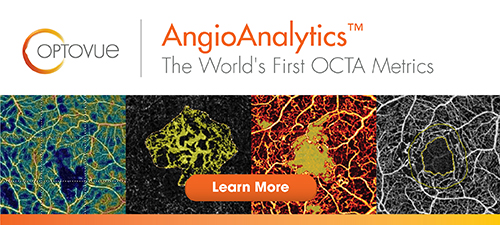 |
||
| Impact of Air Exposure Time on the Water Contact Angles of Daily Disposable Silicone Hydrogels | ||||
The wettability of silicone hydrogel (SiHy) contact lens (CLs) is crucial for the pre-lens tear film stability throughout the day. Therefore, sessile drop and captive bubble setups were used to study the advancing and receding water contact angles (CA) of four SiHy materials: narafilcon A (TE), senofilcon A (AOD), stenfilcon A (MD) and delefilcon A (DT). TE and AOD have 48% and 38% water content, respectively, and no surface coating. MD (54% water) implements "smart chemistry" with just 4.4% bulk silicone content, while DT has >80% water at its surface. These SiHy were subjected to continuous blink-like air exposure (10 s)/rehydration (1s) cycles for zero, 1, 2, 3, 4, 6, 8, 10, 12, 14, and 16 hours.
The advancing CA, which measured the rehydration propensity of the CL surface, proved to be the most sensitive parameter to discriminate between the samples. The order of performance for the entire time scale was DT > MD >> AOD ≥ TE. The extended desiccation/rehydration cycling increased the differences between the CA of DT and MD compared to AOD and TE. This suggested that the low Si surface content and the high surface hydration were major determinants of SiHy wettability. |
||||
SOURCE: Eftimov P, Yokoi N, Peev N, Georgiev GA. Impact of air exposure time on the water contact angles of daily disposable silicone hydrogels. Int J Mol Sci. 2019;20(6). |
||||
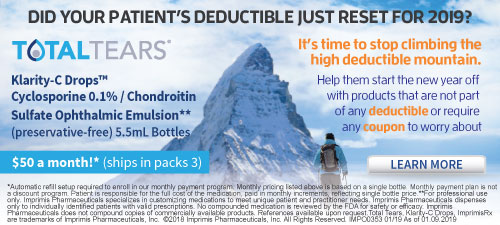 |
||
| Clinical Efficacy of Pinhole Soft Contact Lenses for the Correction of Presbyopia | ||||
Researchers investigated the clinical efficacy of pinhole soft contact lenses for presbyopia correction. Twenty participants with presbyopia wore pinhole soft contact lenses in the non-dominant eye for two weeks. Manifest refraction, Goldmann binocular visual field tests, contrast sensitivity tests and biomicroscopic examinations were performed along with evaluations of questionnaire responses and binocular corrected distance visual acuity (CDVA), distance-corrected near visual acuity (DCNVA), distance-corrected intermediate visual acuity (DCIVA) and depth of focus, both before and after two weeks of lens wear.
DCNVA at 33cm and 40cm, and DCIVA at 50cm and 70cm showed significant improvements after pinhole lens wear, with no changes in the binocular visual field and binocular CDVA. Contrast sensitivities under photopic and mesopic conditions decreased at some frequencies; however, visual function questionnaire scores significantly improved. These findings suggested that pinhole contact lenses effectively corrected presbyopia. |
||||
SOURCE: Park SY, Choi YJ, Jung JW, et al. Clinical efficacy of pinhole soft contact lenses for the correction of presbyopia. Semin Ophthalmol. 2019; Mar 13:1-9. [Epub ahead of print]. |
||||
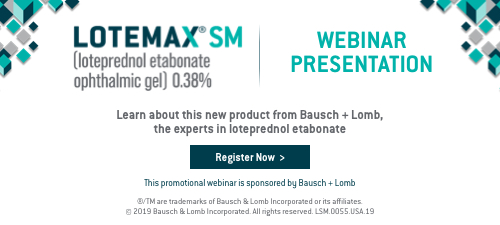 |
||
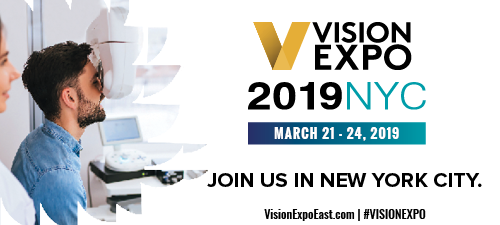 |
||
| News & Notes | |||||||||||||||
| Academy Announces Scott as New Executive Director The American Academy of Optometry announced that Peter Scott, CAE, APR, MBA will assume the position of executive director in mid-April 2019. Outgoing Executive Director Lois Schoenbrun, CAE, FAAO, will retire from her position at the end of April. Schoenbrun has been executive director of the American Academy of Optometry and the American Academy of Optometry Foundation since 1996. Scott most recently served as chief operating officer for the North American Veterinary Community in Orlando, Fla., where he led the planning and implementation of one of the world’s top global medical conferences. He has extensive association experience in business development, program/certification development, strategic partnerships and revenue diversification. Read more. |
|||||||||||||||
| Alcon Acquires PowerVision Alcon acquired PowerVision, a U.S.-based medical device development company focused on creating fluid-based intraocular lens implants. Commercial availability of the IOL technology will be determined following additional development and clinical trials of the intraocular lens. PowerVision's fluid-based design creates a continuously variable monofocal lens, utilizing the natural contraction of the eye's muscles. This technology enables the patient to actively focus on objects, for a natural, continuous range of vision. As part of the agreement, Alcon paid $285 million to PowerVision at closing. Learn more. |
|||||||||||||||
| Essilor Introduces Mr. Blue Infinite Vision Edging System Essilor Instruments introduced the Mr. Blue Infinite Vision edging system, designed to optimize key functions such as mechanical tracing, optical tracing and milling to improve final results for additional types of mountings. Intended to suit every groove profile and ensure aesthetics for all mountings, the edging system has a comprehensive range of bevels and finishes, enabling customized adjustments. It offers greater efficiency by eliminating unnecessary steps, and promotes desirable ergonomics with features such as a head-up design. Read more. |
|||||||||||||||
| EyePromise Introduces Screen Shield Teen Eye Vitamin EyePromise introduced the Screen Shield Teen to its eye vitamin line. The ocular nutrition supplement is formulated to preserve and support visual comfort and wellness for children ages four to 17. Based on doctor feedback and increased consumer concerns about eye and vision symptoms from digital device usage, EyePromise’s Scientific Advisory Board developed the all-natural (not synthetic) zeaxanthin fruit-punch flavored chewable vitamin for children ages four and up. EyePromise Screen Shield Teen is GMO- and gluten free, and is manufactured in FDA cGMP and an NSF-certified for sport facilities. It is designed to complement a child’s current daily multivitamin. Read more. |
|||||||||||||||
|
|||||||||||||||
|
|||||||||||||||
|
Optometric Physician™ (OP) newsletter is owned and published by Dr. Arthur Epstein. It is distributed by the Review Group, a Division of Jobson Medical Information LLC (JMI), 11 Campus Boulevard, Newtown Square, PA 19073. HOW TO ADVERTISE |


